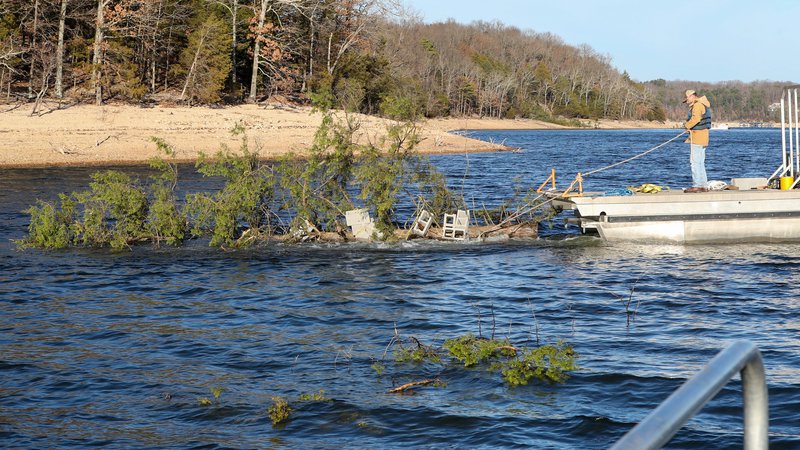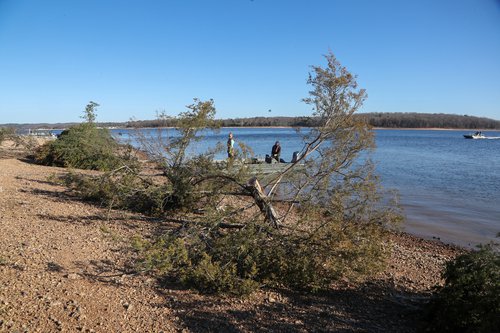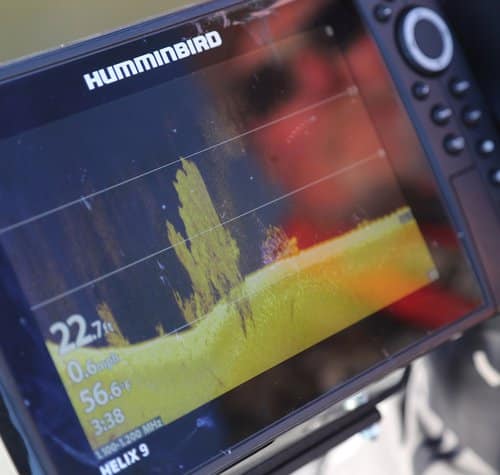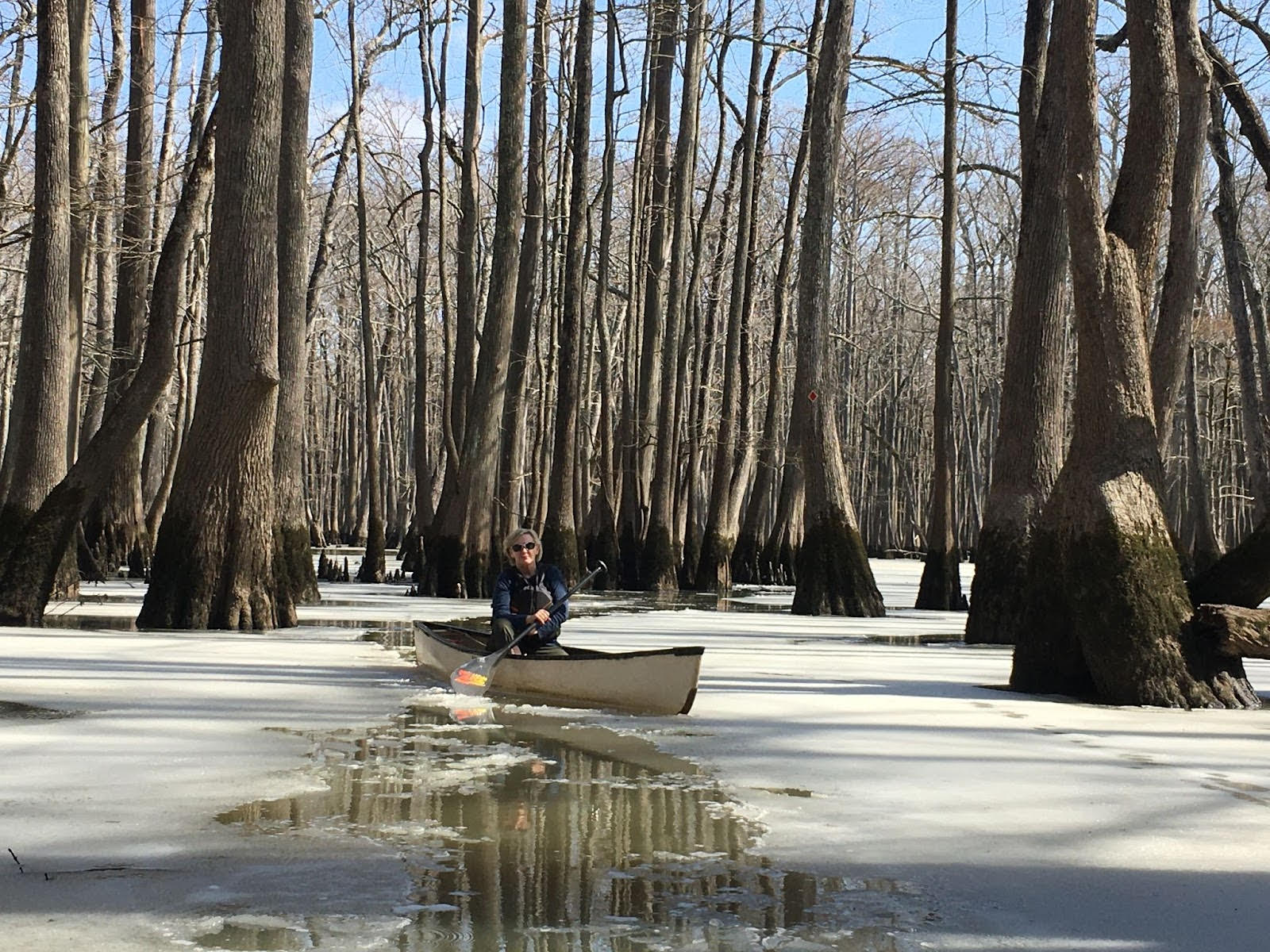AGFC habitat crews busy at Beaver
BY Jim Harris
ON 12-15-2021

Dec. 15, 2021
Jim Harris
Managing Editor Arkansas Wildlife Magazine
ROGERS — Arkansas Game and Fish Commission crews used chainsaws to gnaw down nearly 900 invasive cedar trees during the last two weeks and recycled them into valuable fish habitat at Beaver Lake in northwest Arkansas.
The Army Corps of Engineers doesn’t allow cutting of trees on its property, but a special agreement was worked out for the project. The Corps would allow the AGFC to remove cedars from land the AGFC leases from the Corps to enhance the wildlife habitat and provide the material needed for fish habitat in the lake.
“We did have to get some permits from the Corps to do this cedar removal on Corps property,” Jon Stein, supervisor in the Arkansas Game and Fish Commission’s Northwest Regional Office, said of the project. “They don’t allow people to cut trees on their property, but we’re doing so much to enhance wildlife and fish; also terrestrial plants and pollinator species. It’s just a win-win for everyone.”
The two-weeks of tree work at Beaver Lake is part of a two-prong project of enhancement over the next few years.
“Two or three years ago, Commissioner (Bobby) Martin and I talked about doing a large-scale project on Beaver,” Stein said. “The first goal is to improve the water quality in Beaver Lake and the second was to improve the fish habitat in the lake.”

In the Bank
Along with the tree-habitat work, a streambank stabilization project, overseen by AGFC Stream Team Coordinator Sean Saunders, will reduce the amount of sediment sloughing into the lake from upstream.
“The tributaries of Beaver Lake have experienced eroding shorelines due to flooding and land use,” Stein said. “The goal of this project is to work with a local landowner to conduct bank stabilization that will reduce the amount of sediment released into creeks and eventually Beaver Lake.”
Plans are yet to be worked out before the bank stabilization project gets underway, but the money has been secured through the help of the Beaver Watershed Alliance. The Alliance is a nonprofit “that is basically trying to educate people about improving the water quality on Beaver Lake and its tributaries by getting funding to do these projects,” Stein said.
Plenty of Partners
The Reservoir Fish Habitat Partnership, which provides federal funds that go specifically to fish enhancement projects, is providing a $40,000 matching grant for the stabilization project. For part of the match, Stein said, the Fisheries Division had to have in-kind labor enhancing the fish habitat in the lake, which is where the two-week cedar cutting-and-sinking project comes in.
Stein said the AGFC will also be working with the Bear Creek Bass Club, Quail Forever, the Northwest Arkansas Bassmasters, Back Country Hunters and Anglers and other groups and outdoors vendors, such as Hook, Line and Sinker Outdoors, for voluntary help on the project.
“We’ll take them out over the year and they’ll help us sink habitat into the lake, so we can use their volunteer time and labor as a match to get that funding from the RFHP,” Stein said.
Bass Pro Shops is donating $35,000 to improve water quality and fish quality. FishAmerica Foundation is providing $80,000 for the purchase of a new habitat barge for Stein’s district, based in Rogers.
Wise Land Use
The tree-cutting project is an all-encompassing effort that extends beyond fish. Some of the clearing is opening up huge thickets of cedars so animals and pollinators can thrive. While becoming increasingly common, eastern redcedar have taken over many fragile habitats, such as glades, because of decades of fire suppression. Many species once common throughout northeast Arkansas have seen declines, and the cedar invasion has played some role in those declines. By removing cedars from islands and shorelines of the lake, fisheries crews are improving both terrestrial and aquatic habitat in one punch.

During the first week, 27 AGFC employees sank more than 500 trees to create 89 habitat sites on the southern end of the lake. Another 56 sites were created during the second week, with 22 staffers on hand, moving to the middle and upper end of the lake. All said and done, 882 invasive cedars were removed from the shore and islands and used in the fish habitat sites, available on the interactive map at agfc.com.
Needed Cover
“Beaver Lake, over time, the standing timber that was in the lake bed is degrading,” Strein said. “These brush piles that we’re making, each has between six and 10 large cedar trees and are easy to find with a depth finder.”
Brush piles allow small fish to hide, but also give predators such as largemouth bass an ambush spot. Fish feel more comfortable in cover, Stein said, as opposed to sitting out on a point in the open. In lakes like Beaver that are deep, rocky, old and generally lacking complex habitat, these do an excellent job of congregating fish, including different species at different times of year.
Beaver Lake is known for black bass – largemouth, spotted and smallmouth. Crappie is another important species in the lake, Stein notes, and Beaver lake also has a striped bass population. Stripers will use the brushpiles at certain times of year, but usually are found in the main lake. The lake also has a good population of walleye.
Looking for More?
The full story of the Beaver Lake fish habitat project is available in the January/February issue of Arkansas Wildlife, the AGFC’s award-winning magazine. Arkansas Wildlife is available by subscription for just $12 a year, which includes five bimonthly issues and the 13-month calendar issue full of wildlife photos each July. A two-year subscription is $20 and a three-year deal is $25. To keep up with your AGFC and the Arkansas outdoors, call 800-283-2664 or visit www.arkansaswildlife.com.
Recent News

Stay safe during sunny winter floats
Feb. 21, 2025

Archery qualifiers ready for state tournament March 7-8
Feb. 21, 2025
Subscribe to Our Weekly Newsletter E-mails
Don’t miss another issue. Sign up now to receive the AGFC Wildlife Weekly Newsletter in your mailbox every Wednesday afternoon (Waterfowl Reports are published weekly during waterfowl season and periodically outside the season). Fishing Reports arrive on Thursdays. Fill in the following fields and hit submit. Thanks, and welcome!
